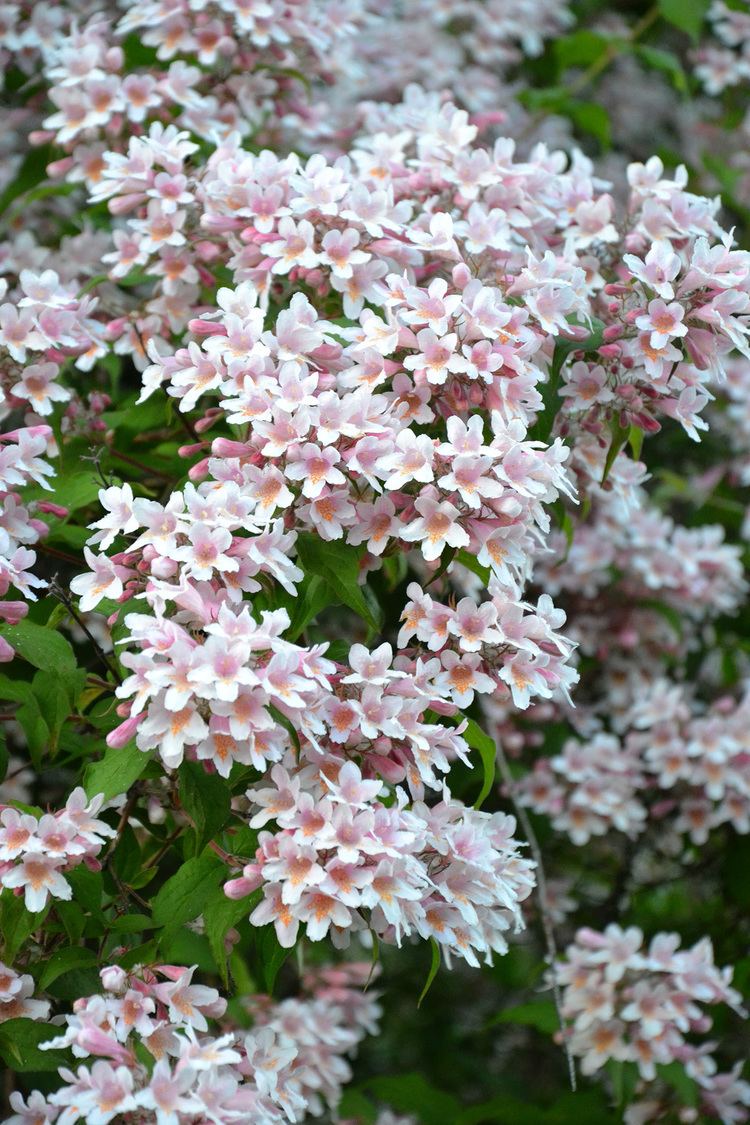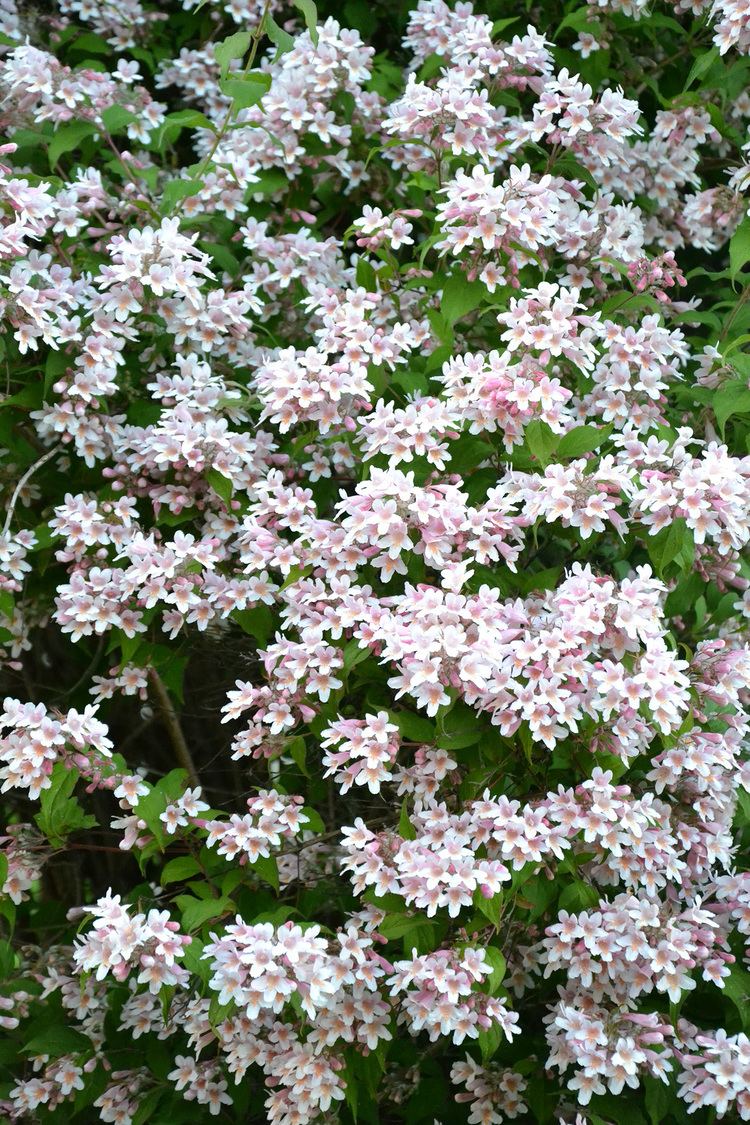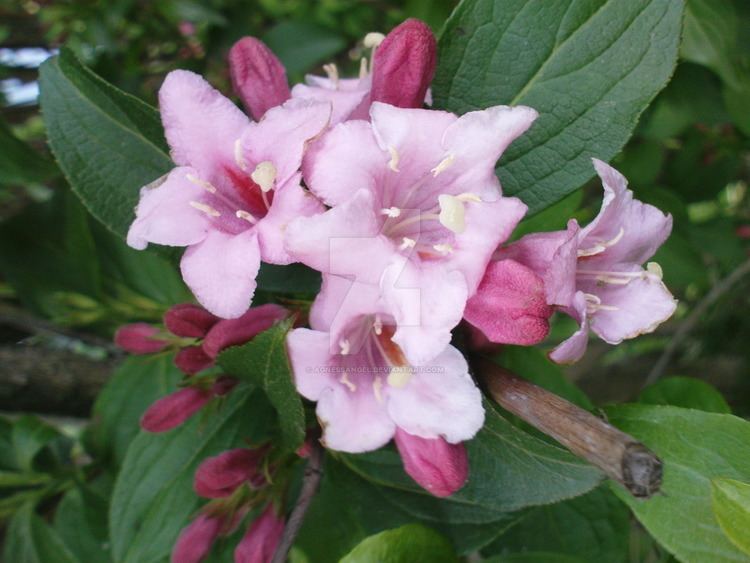Rank Species | Higher classification Kolkwitzia | |
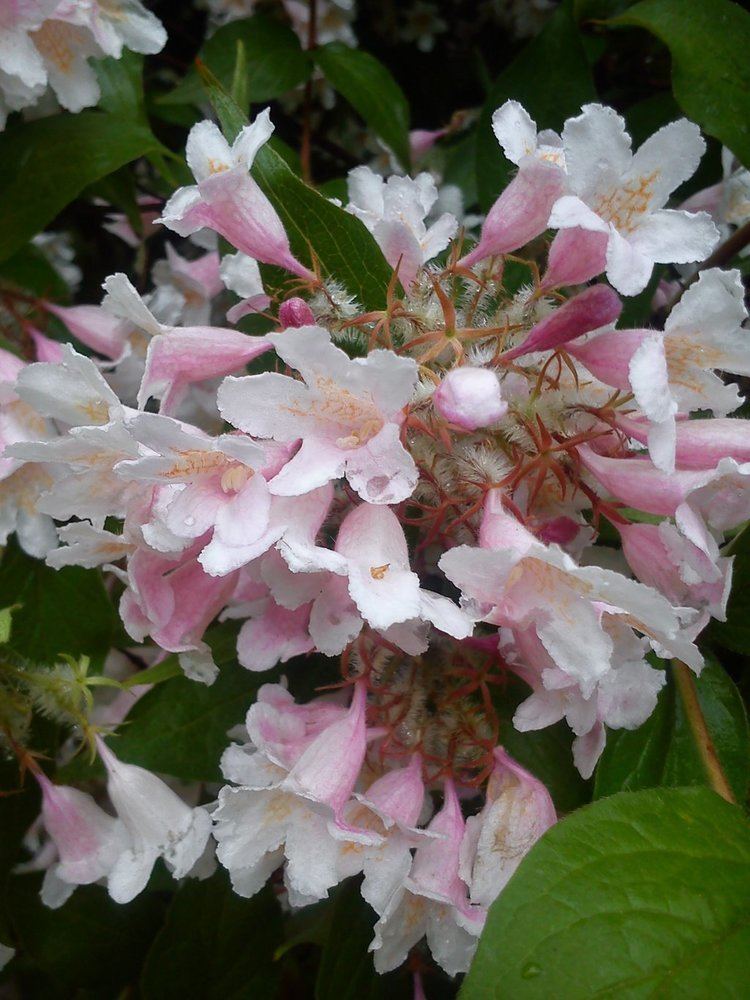 | ||
Similar Deutzia, Weigela, Kerria japonica, Mock‑orange, Forsythia | ||
Linnaea amabilis, formerly known as Kolkwitzia amabilis /kɒlˈkwɪtsi.ə əˈmæbᵻlɪs/ is a species of flowering plant in the family Caprifoliaceae. It used to be the only species in Kolkwitzia, but this has now been merged with an expanded Linnaea, in which also the genera Abelia, Diabelia, Dipelta and Vesalea are subsumed. It is a deciduous shrub known by the common name beauty bush. In China, where it originated, the plant is called wei shi shu (蝟实属). The Latin amabilis means "lovely".
Contents
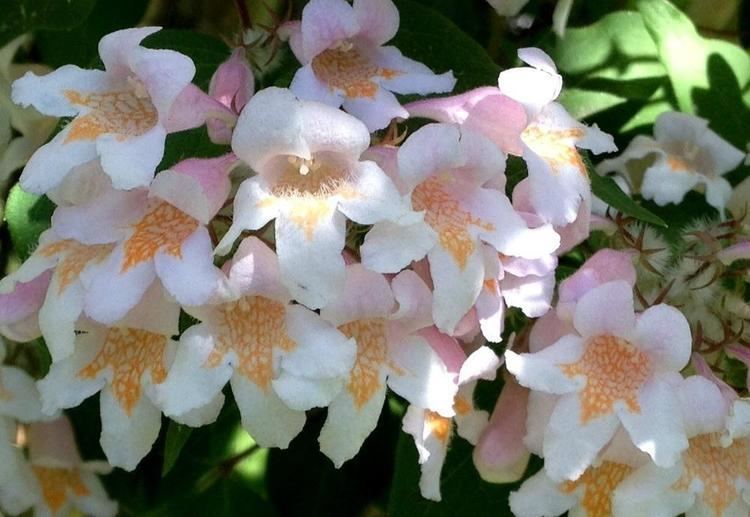
Description
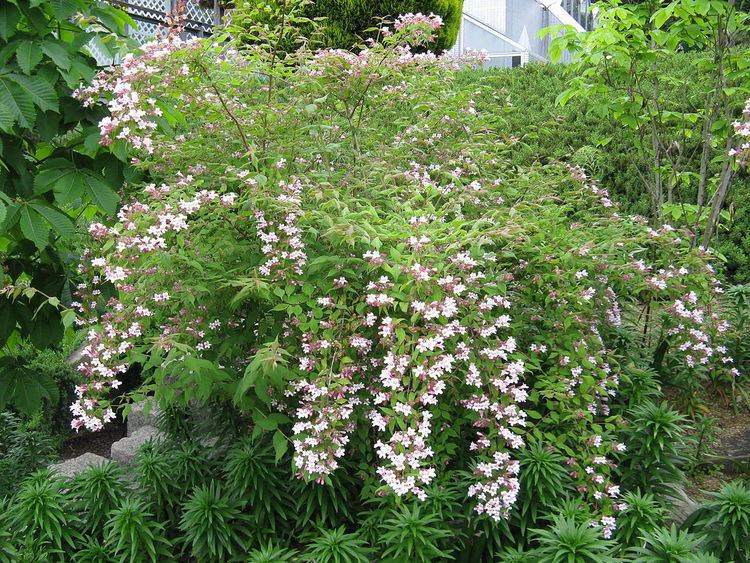
The plant is an arching, spreading shrub, with light brown flaky bark and graceful arching branches, which can grow higher than eight feet tall. It is usually as wide as it is tall. The plant blooms in late spring. Its light pink flowers, dark pink in the bud, are about one-inch long and bell-shaped ("tubular campanulate"); they grow in pairs, as with all Caprifoliaceae, and form showy, numerous sprays along ripened wood. Its leaves are opposite, simple, and ovate, from .5 to 3 inches long, entire or with a few sparse shallow teeth. Its fruit is a hairy, ovoid capsule approximately .25 inches long.
History
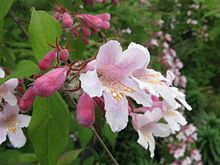
The beauty bush originates in Central China, where it has been discovered for science twice, once by the Jesuit missionary Giuseppe Giraldi in Shensi and then in western Hubei province, by E.H. 'Chinese' Wilson who was collecting for Veitch Nurseries and who introduced it into horticulture. It was named originally named Kolkwitzia for Richard Kolkwitz, a professor of botany in Berlin., but was always considered closely related to Linnaea, with which it is now merged. Wilson sent plant material to his sponsors Veitch Nurseries in Exeter, in 1901, where the shrub flowered for the first time in 1910. It received a Royal Horticultural Society Award of Garden Merit (AGM) in 1923 for Nymans Gardens, Sussex. The shrub became very popular in the eastern United States following World War I, almost a defining shrub in American gardens made between the World Wars. It is very rare and threatened in the wild.
Pruning
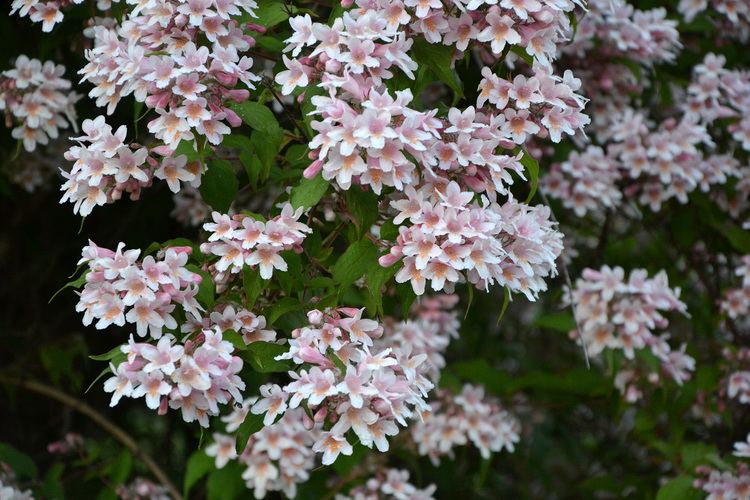
In the garden, the shrub needs plenty of room to develop its long, arching sprays, reducing the temptation to club it back, which results in an unnatural "witches' broom". Occasionally, older stems should be removed at the base when the shrub is dormant, to encourage young, free-flowering growth.
